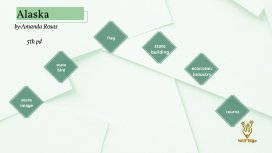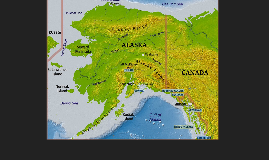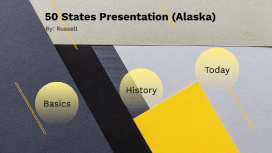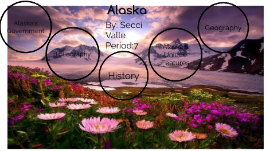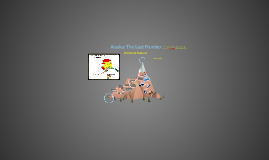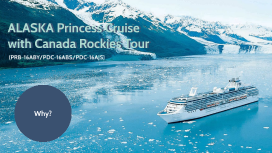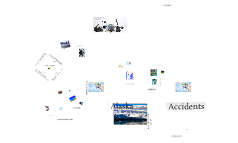Alaska Presentation
Transcript: Alaska has seen 20 years of job growth — the longest stretch since statehood and a streak only seven other states can match. Even today, with a future of high energy prices, Alaska's economy will continue to grow much more. That’s because Alaska’s energy economy gives a counter-cyclical boost. When high energy prices hurt the other country's, they help Alaska. Southeast If you love nature then Alaska is just your cup of tea. Alaska is the largest state in the Union, 2x the size of Texas, and largely still natural and unexplored. Alaska has everything from snowy mountain peaks, glaciers, fresh water streams, swamps and forests as far as the eye can see. Economic Features Of Alaska English, Inupiaq, Siberian Yupik, Central Alaskan Yup'ik,Alutiiq, Unangan, Dena'ina,Deg Xinag, Holikachuk,Koyukon, Upper Kuskokwim,Gwich'in, Tanana, Upper Tanana, Tanacross, Hän,Ahtna, Eyak, Tlingit, Haida,Tsimshian Extremes The People: Population Density In Alaska When you think of Alaska, Russian Orthodox influenced architecture is probably not the first thing that comes to mind. Combine that with museums about the Alaskan pipeline, gold rush and most of all the history of the native population, Alaska’s history is sure to broaden your horizon. Alaska’s Unique History: While some of us dream about beaches, sun and surf, outdoor sportsmen dream of Alaska. You can fish everything from Salmon and Arctic Char to Lake Trout or Halibut. As a matter of fact the town of Homer is known as the Halibut capital of the world. Avid hunters need not limit themselves to the well known Moose and Bear populations in Alaska. Wolverines, caribou, mountain goats, wolves, and muskox are just a few of the other species you can hunt in Alaska’s backyard. Like Fried, Bill Popp, president and CEO of the Anchorage Economic Development Corporation, says forecasting carries a lot of unknowns. Yet reading the writing on walls of the next thirty years does carry a few presumptions worth keeping in mind, he says. “I think we can look at international trade as one place where our opportunities lie in the immediate future and beyond, and Alaska will continue to have a resource extraction-based economy for generations to come,” Popp says. Alaska’s small population spread over a huge geography will continue to influence its limitations and opportunities. “The ability to sell our resources to a global marketplace—our minerals, oil and gas, and wild seafood—will be a major driver,” he says. The immediate years ahead, however, put Alaska in a precarious position in the downward direction of oil prices, the consequent need to ratchet down state spending, and a debt-riddled federal government. “Use the wealth wisely: that will be our challenge, in [this year’s] new fiscal reality of $60 to $70 a barrel of oil,” Popp cautions. “Alaska’s location and global logistics and position in the supply chain—that’s an opportunity for us. After the global recession, the ability to take advantage of the logistics supply chains could present opportunities we don’t expect.” Alaska’s preeminence as a seafood source is one such opportunity. “If we can maintain the integrity of our seafood industry, we will continue to see Alaska seafood command premium prices,” Popp says. “A vast amount of protein comes from here. We can continue to grow in markets like China, given the awful environmental conditions there that present an opportunity because they value pristine, wild seafood.” Climate change in Arctic and sub-Arctic conditions also bodes challenges and opportunities well into the next thirty years, Popp notes. The ability to develop technologies offers small clusters of growth in the years ahead. These days, even when it’s tough, the market shows more resiliency than in the 70s and 80s and less vulnerability to boom-and-bust doom historically true of Alaska, Popp says. “[Alaska] is in a better fiscal situation in terms of the overall economy. We have to be mindful of what is going on, protect ourselves when we need to, and be smart with our dollars and smart with our policies.” Popp predicts solving the energy challenges of rural Alaska will be one of the “greatest issues facing our state in the next thirty years. “It shouldn’t take that long to solve. It’s an intractable issue—it slows economic growth or reverses the economies of rural communities. We have to address that issue,” Popp says. “I hope that we solve it. If the challenges are overcome, then we will see significant activity that we can’t even begin to fathom. ”The Knik Arm Crossing, the giant Susitna-Wantana Hydro Project, and new roads to resources are all future possibilities with economic and government hurdles to overcome. A variable that could impact these projects and others is how Alaska’s population growth pans out in the decades ahead, Popp says.. More Info On Jobs In Alaska Alaska's Land Marks The climate in the extreme north of Alaska is what would be expected for an area north of the Arctic Circle. It is an






